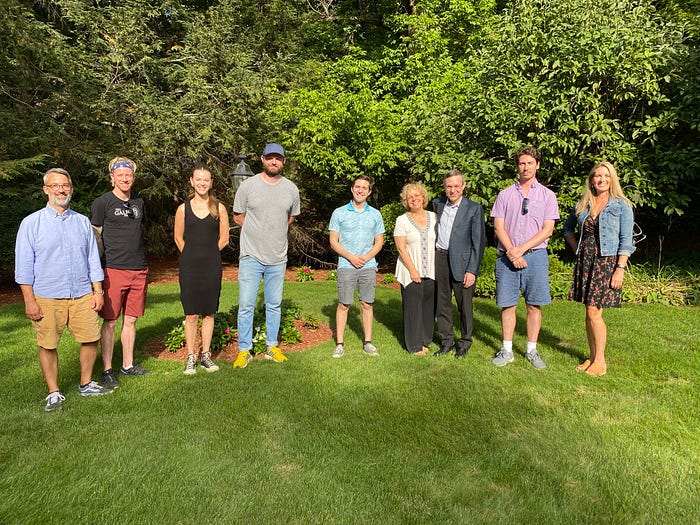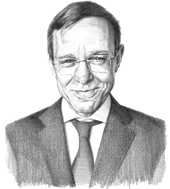
In the court of law, people are convicted of crimes and sentenced to jail based on eyewitness testimonies. However, scientific evidence is held to a higher standard. For a scientific claim to be regarded as credible, it must be based on quantitative data from instruments that are fully understood and under control. In contrast to such measurement devices, eyewitness testimonies could be biased by wishful thinking, hallucinations or ulterior motives. As Winston Churchill noted, history depends on who writes it, making it challenging to extract a balanced description of the physical reality based solely on reports from humans.
Four centuries ago, Galileo Galilei was put in house arrest. This act was intended to hide away from public view the evidence apparent through his telescope eyepiece that the Earth is not at the center of the Universe. This act of censorship, of course, did not change the orbit of the Earth around the Sun, but it allowed the prevailing dogma to dominate society until the evidence was impossible to hide as it was supported by data from many other telescopes. In today’s popularity contests, it is important to remember that reality is whatever it is, irrespective of how many “likes” it gets on Twitter. Instruments similar to Galileo’s telescope do not change their readings based on societal pressure, prejudice or ego.
Whereas the legal system often encounters one-time events that cannot be reproduced, science aims to verify empirical evidence by repeating the experiments with ever better instruments and improved accuracy.
The underlying principle of modern science, founded by Galileo’s approach, is that an “It-It” interaction between the object under study and the measurement apparatus, can be quantified and reproduced because it lacks the subjectivity inherent in the human experience. The alternative “I-It” and “I-You” interactions discussed in the 1923 book “I and Thou” by the philosopher Martin Buber, apply to interactions with humans and are less straightforward to interpret than the quantifiable interaction between purely physical objects.
There are examples in which human experience was verified later by a quantitative experimental setup. For example, the blue light emitted by charged particles as they propagate faster than light in a medium was seen in 1934 through the eyes of Pavel Cherenkov and later confirmed by laboratory detectors.
Instruments are a reliable substitute to humans, not only for the detection and measurement processes but also in the analysis of data and in the derivation of conclusions from it. In the future, the analysis of data may be dominated by artificial rather than natural intelligence, because it is less biased. The use of artificial intelligence (AI) algorithms is already prevalent in analysis of large data sets at the frontiers of scientific research, and it may expand to medical or judicial assessments. The Nobel-winning psychologist, Daniel Kahneman, suggested that “AI is going to win” over human assessments in all walks of life, and “How people are going to adjust to this is a fascinating problem.”
The distinction between eyewitness testimonies or anecdotal evidence of compromised quality was the primary motivation for establishing the Galileo Project, inspired by Galileo’s approach of looking through telescopes for evidence. On the backdrop of numerous reports on Unidentified Aerial Phenomena (UAP) in the sky from eyewitnesses and low-grade equipment, the Project aims to collect new data based on a fully calibrated and controlled suite of state-of-the-art instruments. The analysis of the data will be performed by automated AI algorithms in order to minimize human bias. As is routine in scientific research, the data will be open to the worldwide community and the results will be published in peer-reviewed journals. The transition from anecdotal reports to rigorous scientific gathering of data from well-understood instruments, constitutes a fundamental shift in UAP research, necessary in order to bring it to the mainstream of science.
The Galileo Project team will be testing and calibrating its suite of instruments in the coming months. Once the tests are complete, the research team will deploy the detector system in a desired location and collect new data by filming the sky in the infrared, optical, radio and audio, starting in spring 2023.
Members of the experimental team assembled in the backyard of my home this weekend. It was rewarding to hear the latest update on the status of the Project’s instruments. One of the most valuable team members who designed our audio detectors, Andy Mead, wrote to me after the meeting: “I’m more convinced than ever that the Galileo Project is on the right track — I’m incredibly proud to be part of a team going about this study in the right way, letting the scientific method and true curiosity drive the ship, sailing smoothly past the Twitterverse on our way to a data-driven destination.” He added: “Allowing my curiosity to express itself via my technical work on this project has been a highlight of my professional career to date.“
Andy’s grandfather was part of a covert World War II unit that was recently being recognized with the Congressional Gold Medal. The unit, named “The Ghost Army,” was responsible for using science, technology, and creativity to deceive the German army about troop movements. In other words, this unit took advantage of the dubious nature of the human experience, demonstrating once again that humans are not reliable scientific detectors. Andy’s grandfather was an electrical engineer who was charged with the audio portion of the project. He later went on to publish a paper “The Sonic Deception Facet of Electronic Warfare” in the Armed Forces Journal in 1981. It’s estimated that the unit saved 15,000–30,000 lives via their use of technology.
The Congressional Gold Medal effort ramped up around Andy’s initial involvement in the Galileo Project. Andy noted: “It’s not lost on me that I now have the opportunity to assist with the audio portion of a tremendously important project. Likewise, I get to work alongside an outstanding group of scientists, engineers, and creatives akin to the group that surrounded my grandfather… They often say that history rhymes, and I’m grateful that in a way, I can honor my grandfather’s sonic efforts with my own audio work on the Galileo Project.”
Although Andy’s words reflect an “I-It” and “I-You” perspective, it is the future “It-It” data from his instruments that will be exciting to retrieve as evidence for what the UAP side of “It” might be. And in case some UAP represent sentient devices with AI, its related interaction with the Galileo Project detectors would be even more interesting, potentially leading to an interaction of our AI system with their AI system. This would constitute a new “AI-AI” category that was not even imagined by Martin Buber.
ABOUT THE AUTHOR

Avi Loeb is the head of the Galileo Project, founding director of Harvard University’s — Black Hole Initiative, director of the Institute for Theory and Computation at the Harvard-Smithsonian Center for Astrophysics, and the former chair of the astronomy department at Harvard University (2011–2020). He chairs the advisory board for the Breakthrough Starshot project, and is a former member of the President’s Council of Advisors on Science and Technology and a former chair of the Board on Physics and Astronomy of the National Academies. He is the bestselling author of “Extraterrestrial: The First Sign of Intelligent Life Beyond Earth” and a co-author of the textbook “Life in the Cosmos”, both published in 2021.
